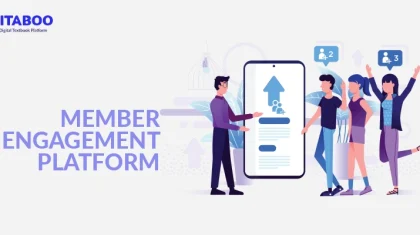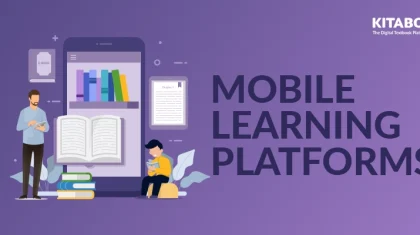
Empowering the Modern Workforce: Rethinking the Learner Experience in Training
Summarize this blog with your favorite AI:
Do the training programs align with the requirements of today’s workforce? It is crucial to reconsider the student experience in traditional training settings. An improved learner experience in training provides essential skills to professionals and increases job fulfillment and efficiency.
Gallup’s study shows that business units with high employee engagement levels are 21% more profitable and 17% more productive, emphasizing the significance of creative training methods. These methods must address different learning styles and involve learners in fun educational activities.
Furthermore, technology integration allows for immersive and interactive training experiences that closely replicate real-life obstacles. By implementing these techniques, companies can develop training courses that have a significant impact and truly connect with contemporary learners.
Table of Contents
I. Personalized Learning: Customization at Its Core
II. Continuous Learning: Cultivating Lifelong Skills
III. Gamification: A Game Changer in Engagement
IV. Technology Integration: Tools for Immersive Experiences
V. Measurement and Feedback: Ensuring Effective Learning
- Insights from data
- Tailored Feedback
- Improved Decision-Making
- Motivation Through Visibility
- Instant Changes
VI. Conclusion
Personalized Learning: Customization at Its Core
Personalized learning is the foundation of the modern learner experience in training. It fundamentally enhances the learner’s experience by addressing individual preferences and styles. This approach tailors content and learning paths to fit each learner’s unique needs, maximizing engagement and efficacy.
- Personalized Learning Platforms: They cater to different learning styles by evaluating individual preferences for visual, auditory, or kinesthetic learning and adjusting training materials accordingly. This guarantees that every student interacts with the material efficiently.
- Tailored Learning Routes: Personalized platforms can generate individualized learning pathways based on past achievements and preferences. This personalization enhances comprehension and aids in better information retention.
- Pacing: Learners control the pace of their education. They can spend more time on challenging topics and skip through what they already know, making learning more efficient.
- Focused Attention: Tailored content helps learners stay motivated and focused by providing material that aligns with their skills and career aspirations.
- Continuous feedback mechanisms enable real-time adjustments, ensuring the learning path stays in line with the learner’s changing needs.
Continuous Learning: Cultivating Lifelong Skills
Interestingly, as per recent study, 74% of employees want to learn in their free time at work, highlighting a chance for organizations to support learning programs that fit into employee schedules.
Creating a culture of lifelong learner experience in training is essential for personal growth and professional advancement. This method guarantees that people stay competitive and flexible in a rapidly changing work environment.
- Ongoing Development Opportunities: Continuous learning programs offer ongoing development opportunities through regular updates and training sessions to maintain up-to-date skills. These opportunities enable professionals to continuously learn and stay current with industry trends and technological advancements.
- Microlearning Modules: Microlearning consists of concise learning segments aimed at achieving particular goals. These small modules are simple to understand and ideal for hectic schedules, enabling students to learn at their speed without feeling stressed.
- Integrating continuous learning: Continuous learning in daily work tasks is essential. This merging assists in strengthening recently acquired skills by employing them in actual situations, boosting memory and real-life utilization.
- Lifelong Learning: Promoting a culture of continuous learning in organizations helps foster a mindset that prioritizes growth and development, thus encouraging lifelong learning. This change in culture increases morale and also drives innovation within the company.
- Access and flexibility: They are important to ensure that learning materials can be reached at any time and location. This adaptability promotes a continuous learning model that caters to personal learning preferences and timetables.
Also Check: Digital Textbook Platform for Training Companies
Gamification: A Game Changer in Engagement
Gamification is revolutionizing the learner experience in training by embedding game-like elements that elevate engagement and motivation. This innovative approach transforms traditional training into immersive and interactive training experiences.
- Interactive Challenges: Incorporating challenges and quests that learners can tackle enhances engagement. These elements make learning an active and dynamic process.
- Incorporating points, levels, and badges into reward systems encourages learners by acknowledging their accomplishments and advancement. This acknowledgment promotes a feeling of achievement and motivates ongoing participation.
- Instant Feedback: Gamification provides instant feedback, enabling learners to gauge their performance quickly. This feedback aids them in quickly adjusting their learning strategies, improving the overall learning experience.
- Milestone Celebrations: Recognizing achievements along the learning journey helps keep learners inspired. Such celebrations enhance the importance of the acquired skills and promote persistence.
- Encouraging teamwork and collaboration through group challenges in competitions fosters a feeling of community and cooperation among learners, creating a more social and supportive learning environment.
Technology Integration: Tools for Immersive Experiences
Incorporating technology into the learner experience in training is essential for developing engaging and interactive training experiences that attract and connect with contemporary learners.
A PwC study demonstrated that employees who received training through Virtual Reality (VR) were up to four times more focused than those using traditional e-learning methods. This important discovery highlights how advanced technologies can change training settings.
- Virtual Reality (VR) and Augmented Reality (AR): Both can replicate real-life settings and situations, offering an interactive experience free from the limitations of the physical world. These tools enable students to develop abilities in a structured yet authentic environment, boosting both participation and skill development.
- Videos containing interactive features: Clickable hotspots or embedded quizzes, engage learners and maintain their attention during the training session. This engagement enhances comprehension and memory by fostering a reciprocal learning process.
- Mobile Learning Applications: Educational apps allow learners to access training materials at any time and in any location, promoting ongoing learning. These applications might have functionalities like offline availability, personalized content streams, and progress monitoring.
- Adaptive Learning Systems: These platforms modify content in real time according to the learner’s performance using algorithms. By adjusting to the learner’s pace and preferences, they guarantee a customized and effective educational experience.
Measurement and Feedback: Ensuring Effective Learning
Assessing the efficiency of training and giving prompt feedback are vital aspects that improve the learner’s experience. Firms with thorough training programs see a 218% higher income per employee and 24% higher profit margins, demonstrating the clear benefits of successful training methods.
This highlights the real advantages of putting resources into strong training and development programs.
1. Insights from data
Analyzing data from training sessions provides a thorough understanding of learner development and involvement. This data is essential for recognizing strengths and areas for enhancement.
2. Tailored Feedback
Teachers can offer individualized feedback to every student by utilizing available data. This customized method assists people in identifying particular areas for improvement and encourages a more individualized learning journey.
3. Improved Decision-Making
Utilizing data analytics aids in strategic decision-making on curriculum modifications and content refreshes. Knowledge gained from the data used for training can help educators improve their teaching techniques and resources to enhance outcomes.
4. Motivation through Visibility
When learners are consistently informed of their progress, they are encouraged to enhance their performance and become more involved with the content. The ability to see how far they have come can motivate individuals to keep working hard and become more involved.
5. Instant changes
Feedback in real-time enables quick corrections and adjustments throughout training. This quick feedback helps learners correct mistakes and improve learning efficiency by avoiding misconceptions and ineffective strategies.
Conclusion
The future of training hinges on enhancing the learner experience through advanced strategies like personalized learning, gamification, and technology integration. These methods guarantee that training is impactful, engaging, and applicable to today’s employees.
Organizations can significantly improve skill development and retention by promoting a culture of ongoing learning and offering engaging, interactive training opportunities.
Implementing these new strategies will enable your employees and set your company up for success in a challenging environment. Discover how KITABOO can enhance your training programs and elevate the experience for your learners.
Reach out now to have a quick product demo.
To know more, please write to us at contact@kitaboo.com
Also Check:
Discover how a mobile-first training platform can help your organization.
KITABOO is a cloud-based platform to create, deliver & track mobile-first interactive training content.



